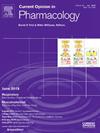Modulating neuroinflammation through electroacupuncture: Mechanistic insights and pharmacological synergies
IF 4.2
3区 医学
Q1 PHARMACOLOGY & PHARMACY
引用次数: 0
Abstract
Neuroinflammation plays a central role in the pathogenesis of numerous neurological and neurodegenerative diseases, driven by complex interactions among glial activation, cytokine release, blood–brain barrier (BBB) dysfunction, and autonomic dysregulation. While pharmacological therapies targeting inflammatory mediators show promise, their efficacy is often limited by poor BBB permeability and systemic side effects. Electroacupuncture (EA), a neuromodulatory technique that combines acupuncture with electrical stimulation, has emerged as a promising adjunctive intervention for modulating neuroimmune dynamics. EA activates defined somatosensory afferents and transmits signals to key autonomic and limbic nuclei, including the brainstem and hypothalamus, which regulate immune responses. At the molecular level, EA suppresses pro-inflammatory pathways such as TLR4/NF- κB and NLRP3 inflammasome activation while promoting anti-inflammatory signaling via the JAK2/STAT3 and PI3K/Akt pathways. It also influences microglial polarization toward the reparative M2 phenotype and modulates BBB permeability and gut–brain axis interactions. Notably, EA has demonstrated synergistic potential when combined with pharmacologic agents such as l-DOPA, selegiline, donepezil, and minocycline, enhancing neuroprotective efficacy and reducing inflammatory and oxidative burdens. This highlights EA's potential integration into clinical strategies for treating neurodegenerative disorders. Understanding the neural circuits and immunological cascades engaged by EA may inform its future integration with pharmacotherapy in personalized neuroimmune interventions.
通过电针调节神经炎症:机制见解和药理学协同作用
神经炎症在许多神经和神经退行性疾病的发病机制中起着核心作用,由神经胶质活化、细胞因子释放、血脑屏障(BBB)功能障碍和自主神经失调之间的复杂相互作用驱动。虽然针对炎症介质的药物治疗显示出希望,但其疗效往往受到血脑屏障通透性差和全身副作用的限制。电针(EA)是一种结合针灸和电刺激的神经调节技术,已成为一种很有前途的调节神经免疫动力学的辅助干预手段。EA激活定义的体感传入事件,并将信号传递到关键的自主神经和边缘核,包括脑干和下丘脑,这些核调节免疫反应。在分子水平上,EA抑制TLR4/NF- κB和NLRP3炎性小体激活等促炎通路,同时通过JAK2/STAT3和PI3K/Akt通路促进抗炎信号传导。它还影响小胶质细胞向修复性M2表型的极化,调节血脑屏障的通透性和肠-脑轴的相互作用。值得注意的是,EA与l-DOPA、selegiline、donepezil和米诺环素等药物联合使用时显示出协同作用潜力,增强神经保护功效,减少炎症和氧化负担。这突出了EA在治疗神经退行性疾病的临床策略中的潜在整合。了解EA参与的神经回路和免疫级联可以为其在个性化神经免疫干预中与药物治疗的未来整合提供信息。
本文章由计算机程序翻译,如有差异,请以英文原文为准。
求助全文
约1分钟内获得全文
求助全文
来源期刊
CiteScore
8.80
自引率
2.50%
发文量
131
审稿时长
4-8 weeks
期刊介绍:
Current Opinion in Pharmacology (COPHAR) publishes authoritative, comprehensive, and systematic reviews. COPHAR helps specialists keep up to date with a clear and readable synthesis on current advances in pharmacology and drug discovery. Expert authors annotate the most interesting papers from the expanding volume of information published today, saving valuable time and giving the reader insight on areas of importance.

 求助内容:
求助内容: 应助结果提醒方式:
应助结果提醒方式:


